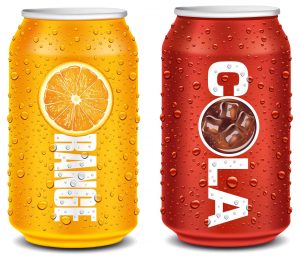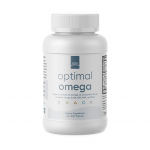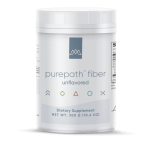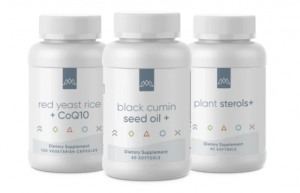Have You Had Your Cholesterol Levels Checked?
- What You Need to Know About Cholesterol
- Determining Whether You Have High Cholesterol
- What Causes High Cholesterol?
- High Cholesterol isn’t the Whole Story
- How to Lower Cholesterol Naturally
If you have a risk for heart disease or another condition potentially triggered by high cholesterol, your doctor might ask you to lower your cholesterol levels.
The debate about how much of a role cholesterol plays in heart disease and other problems, however, is contentious and inconclusive.
Some experts support the lipid hypothesis, which looks at cholesterol’s impact on your blood. Saturated fat is a chief culprit here for heart disease because this type of dietary fat raises cholesterol.
Others argue such theories are outdated and unfairly demonized saturated fat and cholesterol. One systematic review and meta-analysis argued the 40 studies reviewed “lacked the methodologic rigor to draw any conclusions regarding the effects of dietary cholesterol on [heart disease] risk.”
Regardless, high cholesterol remains a concern for many doctors and other healthcare professionals. But why does this molecule get such a bad rep anyway?
What You Need to Know About Cholesterol
You need cholesterol to live. It is essential for normal function of all your cells and a fundamental element of cell membranes.
This waxy, fat-like substance also serves as a precursor for vitamin D, bile acids (to digest dietary fat), and hormones including testosterone and estrogen. Cholesterol is an essential substance made by your liver but also found in animal-derived foods including meat and eggs.
Only 15% of circulating cholesterol in the blood comes from what you eat, says Dr. Steven Nissen, chairman of cardiovascular medicine at the Cleveland Clinic. The remaining 85% – the vast amount – comes from your liver.
 In other words, if you lower dietary cholesterol, you’re not really impacting cholesterol blood levels very much.
In other words, if you lower dietary cholesterol, you’re not really impacting cholesterol blood levels very much.
While the focus usually centers on high cholesterol, too little cholesterol can also be a problem, since nearly every organ in your body depends on this molecule.
Your brain, for instance, contains about 20% of your cholesterol, which helps develop and protect nerve cells that help your brain to communicate with your body.
Cholesterol is insoluble in water, so it needs a “shuttle” to carry it through your bloodstream. Those shuttles are called lipoproteins. They include low-density lipoproteins (LDL) and high-density lipoproteins (HDL). (There are other lipoproteins, but for simplicity, we’ll stick with these two here.)
“Your liver coats [cholesterol] with a ‘protein wrapper’ and bundles it with a few other substances,” which allow it to enter your circulatory system,” says Jonny Bowden, Ph.D., and Stephen Sinatra, MD, in The Great Cholesterol Myth.
“In our case, the protein wrapper acts as a passport, allowing cholesterol to travel throughout your bloodstream,” they say. “It’s these packages – known as lipoproteins – that we are actually measuring when we measure our ‘cholesterol’ levels.”
Traditionally, HDL is considered your “good” cholesterol because it carries cholesterol from other parts of your body back to your liver, which then removes that cholesterol from your body.
LDL, on the other hand, is your “bad” cholesterol because high levels can contribute to the buildup of arterial plaque. These plaques can block blood flow to your heart and other organs, creating a heart attack and other problems.
Yet as you’ll see, classifying LDL or HDL as good or bad dramatically oversimplifies things.
Determining Whether You Have High Cholesterol
 High cholesterol has no signs or symptoms. A blood test can determine your cholesterol levels. Traditional blood tests will look at specific measures for high cholesterol and other factors for heart disease, including:
High cholesterol has no signs or symptoms. A blood test can determine your cholesterol levels. Traditional blood tests will look at specific measures for high cholesterol and other factors for heart disease, including:
- Total cholesterol
- LDL
- HDL
- Triglycerides
- C-reactive protein (a protein in the blood that measures inflammation)
How often your doctor checks cholesterol levels depends on your age, race, risk factors, and family history. Experts recommend men 45 – 65 and women 55 – 65 should get tested every one to two years.
Among the conditions that can contribute to high or abnormal cholesterol include obesity, diabetes, an underactive thyroid, and other problems including liver or kidney disease.
What Causes High Cholesterol?
 High cholesterol on its own is not a medical condition, and experts differ about what constitutes “high.” Traditionally, researchers attribute saturated fat as a culprit for high cholesterol, which subsequently triggers heart disease.
High cholesterol on its own is not a medical condition, and experts differ about what constitutes “high.” Traditionally, researchers attribute saturated fat as a culprit for high cholesterol, which subsequently triggers heart disease.
More recent research, however, suggests that saturated fat does not clog your arteries.
Other studies point to villains like sugar and other processed carbohydrates, which can contribute to chronic inflammation, as a bigger driver for cardiovascular disease.
One study found replacing saturated fats with refined carbohydrates (especially those with added sugars) adversely impact LDL, HDL, and triglycerides. In fact, a diet high in added sugars can increase your risk for cardiovascular disease three-fold.
High Cholesterol isn’t the Whole Story
That saturated fat raises cholesterol and creates problems like heart disease has become (as Mark Hyman, MD, in Food: What the Heck Should I Eat? says) “horribly oversimplified and entirely wrong.”
“Cholesterol is not considered a nutrient of concern for overconsumption,” said the 2015 Dietary Guidelines issued by the Department of Health and Human Services along with the Department of Agriculture.
That was a seismic change from previous Dietary Guidelines, which recommended limiting cholesterol intake to no more than 300 mg a day.
To complicate things more, measures your doctor uses to test cholesterol levels – HDL and LDL – might not be entirely accurate.
“The idea of ‘good’ and ‘bad’ cholesterol is a wholly outdated concept,” writes Bowden and Sinatra. Florence Comite, MD, agrees: “The underlying principle is simple: conventional medical tests cannot always reveal underlying problems.”
Instead, Bowden and Sinatra say there are specific subtypes of LDL and HDL, some of which are better than others. The most important is the subtype A and subtype B:
- Subtype “A” is big and fluffy (like a cotton ball) and relatively harmless.
- Subtype “B” is small, hard, and dense. These LDL molecules create damage by becoming oxidized, stick to your arterial walls, and triggering inflammation.
In other words, saying you have high LDL or low HDL doesn’t really tell you which subtype of LDL or HDL you have. Rather than classifying LDL as bad or HDL as good, the subtype of HDL and LDL can be good or bad.
“One reason smaller LDL B molecules (those BB-gun pellet types) are so bad is that they are the ones most likely to be oxidized, and on top of that, they’re small enough to penetrate the arterial walls in the first place,” said Bowden and Sinatra. “The smaller the particles (and subtype B are small particles indeed), the more inflammatory they are.”
Likewise, not all HDL is “good.” One study found that HDL in healthy individuals differs from HDL from people with chronic diseases including diabetes. Whereas “good” HDL in healthy people reduces inflammation, “bad” HDL doesn’t.
“For many years, HDL has been viewed as good cholesterol and has generated a false perception that the more HDL in the blood, the better,” said Angelo Scanu, M.D., in the study. “It is now apparent that subjects with high HDL are not necessarily protected from heart problems and should ask their doctor to find out whether their HDL is good or bad.”
You can find out whether you have the good or bad subtypes of HDL and LDL with a particle size test, which measures (among other things) LDL and HDL particle number and particle size. Bowden and Sinatra call a particle size test “the only cholesterol test that matters.”
While high cholesterol could be a driving factor in heart disease and other conditions, this molecule is also one piece of a very complicated puzzle. “Heart disease is a complex condition that involves not only cholesterol but inflammation, blood sugar, triglycerides, and a host of other factors,” says Hyman.
How to Lower Cholesterol Naturally
Certain factors that impact your cholesterol profile are beyond your control, including age, race, and genetics.
Yet even if you have a history of high cholesterol in your family, you aren’t doomed to its fate. Many factors to normalize cholesterol are completely within your control, including creating and maintaining a healthy weight.
If you have high cholesterol, your doctor might opt to put you on a statin or other cholesterol meds. Some research shows that doctors overprescribe statin drugs to healthy people at low cardiovascular risk.
Ultimately, whether you should take statins or other cholesterol meds should be between you and your doctor.
You might instead discuss alternatives including diet and lifestyle modifications, which research shows can normalize LDL, total cholesterol, and more while helping you lose weight. A chiropractor can also help you create a program that helps normalize cholesterol without cholesterol meds.
Fortunately, research shows lifestyle changes such as weight loss, exercise, and dietary modification may improve lipoprotein quality if you have high cholesterol.
Foods that lower cholesterol should focus on lowering inflammation and other factors that drive heart disease. Since little dietary cholesterol contributes to blood cholesterol, you may or may not reduce high-cholesterol foods.
An alternative approach to normalizing high cholesterol might be to focus on food quality. One study found grass-fed beef has a better nutrient profile (including anti-inflammatory fatty acids) than grain-fed beef.
Recent studies on eggs, another high-cholesterol food, show that additional dietary cholesterol does not negatively affect your cholesterol profile. In fact, they might even improve lipoprotein particle profiles and HDL. Again, quality matters.
These and other modifications can have dramatic effects on your health including creating healthy cholesterol levels and weight:
- Increase anti-inflammatory fatty acids. Whereas our Paleolithic ancestors ate about an equal ratio of omega-6 to omega-3 polyunsaturated fatty acids, today we eat 20 times or more pro-inflammatory omega 6 fatty acids that can contribute to inflammatory diseases including atherosclerosis or hardening of the arteries. Anti-inflammatory foods include nuts, seeds, low-sugar fruits like berries and avocado, extra-virgin olive oil, wild-caught salmon, and vegetables. If you aren’t regularly eating wild-caught seafood, consider supplementing with fish oil to get those anti-inflammatory fatty acids.
-
 Add more fiber. Research shows dietary fiber – specifically, soluble fiber – can reduce cholesterol levels. That’s because excess cholesterol binds to soluble fiber, which you then excrete from your body. Aim for at least 35 grams of fiber daily from foods like fruit, vegetables, nuts, and seeds. (Many of these plant foods also provide antioxidants to balance the oxidative stress that can contribute to heart disease.) You might also consider a powder supplement if you find getting fiber from food difficult. As you increase fiber intake, remember to drink additional water.
Add more fiber. Research shows dietary fiber – specifically, soluble fiber – can reduce cholesterol levels. That’s because excess cholesterol binds to soluble fiber, which you then excrete from your body. Aim for at least 35 grams of fiber daily from foods like fruit, vegetables, nuts, and seeds. (Many of these plant foods also provide antioxidants to balance the oxidative stress that can contribute to heart disease.) You might also consider a powder supplement if you find getting fiber from food difficult. As you increase fiber intake, remember to drink additional water. - Lower sugar intake. Too much sugar and refined carbohydrates – especially without healthy foods including omega-3 fatty acids, antioxidants, and dietary fiber – can contribute to inflammation. You know the usual suspects, but sugar can hide in not-so-obvious places including salad dressings. Learn to read labels. Anything ending in -ose is sugar.
 Eat more fermented foods. Fermented foods such as unpasteurized sauerkraut and kimchi are rich in probiotics to support gut health. Most of us don’t eat these foods regularly, which makes supplementing with a probiotic ideal. One meta-analysis of randomized controlled trials found that probiotic supplements could significantly reduce serum total cholesterol.
Eat more fermented foods. Fermented foods such as unpasteurized sauerkraut and kimchi are rich in probiotics to support gut health. Most of us don’t eat these foods regularly, which makes supplementing with a probiotic ideal. One meta-analysis of randomized controlled trials found that probiotic supplements could significantly reduce serum total cholesterol.- Quit smoking. Among its damage, cigarette smoking increases your risk of inflammation, oxidative stress, and so much more. Smoking is also a risk factor for heart disease.
- Implement lifestyle factors. Maintaining normal cholesterol levels start with your diet but also requires good sleep, managing stress levels, and working with your chiropractor to reduce your risk factors for other chronic diseases. Aim for eight hours of solid sleep every night. Meditation, yoga, deep breathing, and mindfulness make great ways to de-stress.
- Move more. Consistent, regular exercise is an effective way to normalize high cholesterol. Research shows that high- and moderate-intensity exercise can increase HDL and lower LDL and triglycerides. Regardless of your fitness level, you can find something with these strategies to fit more exercise into your schedule.
- Consider a natural supplement. Targeting your cholesterol levels with natural supplements may help you achieve the optimal cholesterol levels for a healthy heart. The MaxLiving Cholesterol Balance Bundle is an excellent bundle for anyone looking to target healthy cholesterol levels, naturally. This bundle promotes optimal heart health, helps prevent inflammation, and can reduce oxidative stress. Click here to learn more.
High cholesterol and your risk for heart disease don’t occur overnight. Likewise, normalizing cholesterol levels with dietary and lifestyle modifications might require time.
A chiropractor can create a dietary, nutrient, and lifestyle plan that works for you and gets results as you work with your doctor to determine what creates your high cholesterol. With the right plan, you can completely normalize cholesterol and all the complications that high cholesterol.



